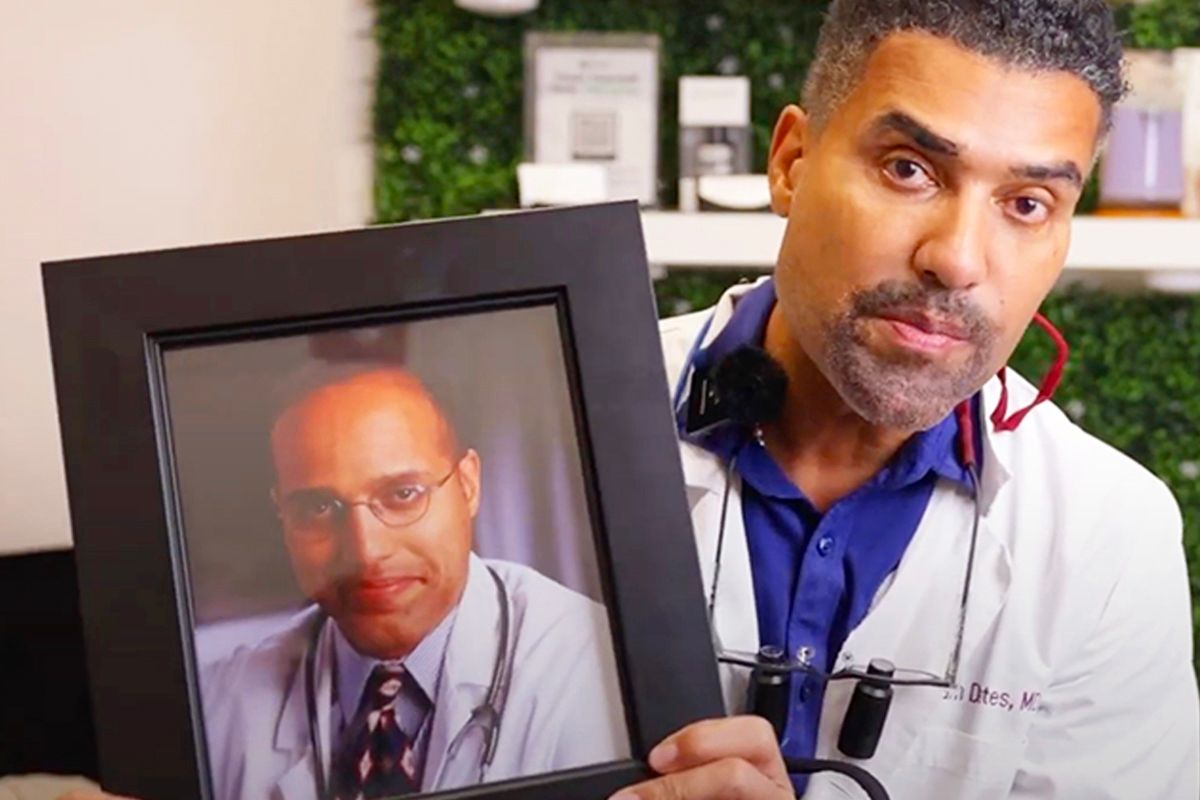



What is micro pigmentation?
Follicular micro pigmentation, also called scalp micro pigmentation, is a treatment that involves injecting pigment into the scalp to create the appearance of real hair follicles in order to recreate the hairline, cover scars, or add the appearance of density to thinning or balding areas.
Follicular micro pigmentation is not a cure or solution for hair loss — it is simply a way to feel more confident in your own skin. Micro pigmentation
does not damage your hair follicles, so your hair could potentially grow back, unrelated to this treatment.
Micro pigmentation is similar to getting a tattoo, but different in important ways. Micro pigmentation is a more exact, detailed injection of pigment into the scalp. The high-quality pigment is mixed specially to exactly match your hair color and will not change colors, even after multiple years.
Microblading and micro pigmentation are both tools for giving the appearance of fuller, thicker hair, but for different areas of the head and face. Microblading specifically works for eyebrow hair, because the machine is made of needles in a line to give the appearance of a thin strip of hair. Micro pigmentation uses one needle to create individual dots on the scalp to give the appearance of thick, natural hair follicles.
Like any hair loss treatment, scalp micro pigmentation has advantages and disadvantages. There are not many cons that come with scalp micro pigmentation, but there are some to take note of.
Cons
Follicular micro pigmentation can only go wrong if you are allergic to the pigment used, are prone to developing keloids, or if you go to a hair science office that is not well equipped or well trained in the art of micro pigmentation. Be sure to talk to your specialist ahead of your treatment about your allergies and their qualifications.
Some people have described micro pigmentation as similar in pain level to getting a tattoo, but your scalp will be numbed and everyone has a different pain tolerance. Let your treatment specialist know if you are concerned about pain.
Cost can also be a con for some people. Follicular micro pigmentation costs between
$1,000 and $5,000 depending on the scale and range of treatment required. However, this cost is largely less than the cost for a full hair transplant.
Your micro pigmentation may lighten and fade after
2–5 years due to the natural exfoliation of the skin on your scalp, but it won't fade completely. Once it starts to lighten, you can book another round of sessions for a touch up. If you ever want to fully remove your micro pigmentation, you would need to use a medical grade laser treatment, like one used for tattoo removal.
Pros
Now that the cons have been covered, you’ll see the pros far outweigh them. Micro pigmentation is an excellent alternative for people who cannot get a hair transplant for whatever reason.
You need
3–5 sessions of micro pigmentation treatments, each of which can last as long as
five hours, depending on the scale and area being treated. Your sessions should be about one month apart, and after each session you will have visibly fuller-looking hair. These immediate results differ from hair transplant results that take upwards of
six months to grow in.
The pigment is mixed on location and matched to your natural root color, so your micro pigmentation results will look full and natural. Your treatment specialist will be able to create enough unique angles and depth and shadow to give your scalp the appearance of many healthy hair follicles.
After your first micro pigmentation session, you should be able to go home and rest without too much upkeep. It is important to
keep your scalp covered when out in the sun for at least the first five days.
For 48 hours, do not wash your hair or scalp — try to take baths if you can, and
try to keep your scalp as dry as possible. Don’t participate in any extreme workouts for 2 days, as sweat on your scalp could damage your results.
The results of your micro pigmentation treatment won’t look fake to the naked eye. Your micro pigmentation will look the most realistic if you have a close-cropped haircut or buzz cut. The pigmentation will simply fill in the thinner areas to give the overall look of thick hair.
If your micro pigmentation is performed correctly and your pigment mixed accurately, your results should not change color. High-quality pigment may fade with time but it should not turn blue like some cheap tattoo inks do.
Where to book your micro pigmentation appointment
If you have hair thinning or loss, scalp micro pigmentation may be the best hair loss solution for you! This semi-permanent process gives the appearance of naturally thick hair.
At Dr. Yates Hair Science, you can trust we have your best interests in mind and will help you get the best results. Take a look at our
micro pigmentation gallery and be sure to
book your consultation today!



Ready to love your hair? Call 312.883.9617 for a FREE quote & consultation or fill out the form below
OUR LOCATION
213 N. Stetson Ave
Chicago, IL 60601
HOURS
Copyright ©2025 Dr. Yates Hair Science | All Rights Reserved
Powered by HEAVY LEVITY